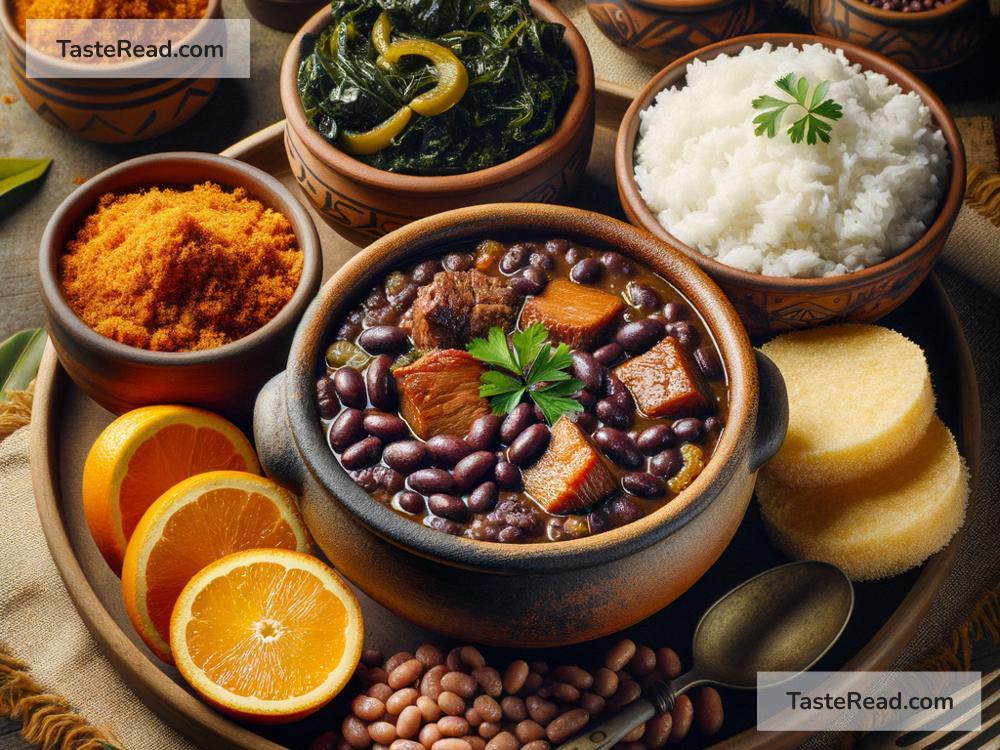The History of the Brazilian Feijoada: A Dish that Tells a Story
Feijoada is one of Brazil’s most beloved dishes, enjoyed by people throughout the country. It is more than just food—it is a dish that reflects Brazil’s rich history, culture, and diversity. This hearty stew of black beans, meat, and spices has deep roots in Brazilian society, and understanding its story helps us understand Brazil itself. In this article, we’ll uncover the fascinating history of feijoada, told in simple English.
What is Feijoada?
Feijoada (pronounced fay-zhoo-ah-dah) is a traditional Brazilian dish made with black beans, pork or beef, and often served with rice, collard greens, and orange slices. Feijoada is known for its rich flavor and comforting qualities. While variations exist across Brazil, the dish usually includes different cuts of pork, such as sausage, ribs, and even more unusual parts like pig ears or trotters.
Feijoada isn’t a dish you eat every day; it’s considered special. Many Brazilian families come together to enjoy feijoada for lunch, especially on weekends. The dish is slow-cooked, allowing the flavors to fully blend and create a hearty meal that people associate with warmth, family, and tradition.
Where Did Feijoada Come From?
To understand feijoada’s story, we need to look back hundreds of years to Brazil’s colonial period. Brazil was colonized by Portugal in the 1500s, and during this time, the country became a hub for agriculture, especially sugarcane plantations. Enslaved Africans were brought to Brazil to work in harsh conditions on these plantations.
Feijoada is often said to originate from these communities. According to popular stories, enslaved people would use the ingredients they had access to—scraps of meat that were considered undesirable—and cook them with beans to create a filling, flavorful meal. Black beans were a staple food in Brazil at the time, and they were affordable, making them accessible to the lower classes. Adding cuts of pork, such as ears or feet, stretched the dish further.
However, historians debate this story. Some argue that feijoada’s origins are more complex and tied to European cuisine. In Portugal, there are dishes like “cozido” and “caldo,” which are stews made with beans and a variety of meats, much like feijoada. Portuguese settlers likely brought recipes for these stews with them, and over time, the dish adapted to include local Brazilian ingredients and influences.
Either way, feijoada reflects the blending of cultures in Brazil—African, European, and Indigenous—that created the nation’s unique identity.
Feijoada and Brazilian Culture
Feijoada has grown far beyond its humble beginnings. Today, it is considered a national dish, with many Brazilians proudly cooking and eating it. In fact, feijoada has become a symbol of Brazil’s ability to bring together different people and traditions into something delicious and deeply meaningful.
The dish also plays a special role in Brazilian social life. Feijoada is often served for large gatherings, family celebrations, and special occasions. Restaurants across Brazil dedicate specific days of the week—usually Wednesdays and Saturdays—for feijoada lunch. It becomes a social event, where friends and families gather to enjoy good food and relax together.
One key part of serving feijoada is the side dishes. Brazilian feijoada isn’t complete without white rice, sautéed collard greens, and orange slices. The orange slices might seem unusual, but they help balance the richness of the meal and aid digestion. Sometimes, people pair feijoada with farofa, a toasted cassava flour mixture that adds texture.
Regional Variations
Brazil is a large country, and feijoada reflects this diversity. Different regions add their own twist to the dish. For example, in Rio de Janeiro, which is considered the heart of feijoada culture, the dish often sticks to traditional recipes with black beans and a variety of pork cuts. In Bahia, a northeastern state influenced by African traditions, some versions of feijoada include spicy seasonings and additional ingredients like coconut milk.
Even though there are variations, the essential spirit of feijoada remains the same—it’s a down-to-earth dish made with beans, meat, and lots of care.
Feijoada Around the World
Feijoada has become famous outside Brazil, especially among fans of Brazilian cuisine. In countries like the United States, feijoada is often served at Brazilian restaurants or during celebrations of Brazilian culture, such as Carnival events. Some adaptations of the dish use different types of beans or adjust the meat to suit regional tastes, but the heart of feijoada—a rich bean and meat stew—remains the same.
Conclusion: More than a Meal
Feijoada is not just a dish; it’s history on a plate. Whether it was born from the creativity of enslaved people or inspired by Portuguese stews, it has become a key part of Brazilian identity. Feijoada tells the story of resilience and cultural blending, showing how Brazil turned simple ingredients into something extraordinary.
Today, when Brazilians sit down to enjoy feijoada, they’re not just eating—they’re participating in a tradition that connects them to their past and celebrates their country’s diversity. So, the next time you savor feijoada, remember the rich history behind this iconic dish—it’s a taste of Brazil itself.


